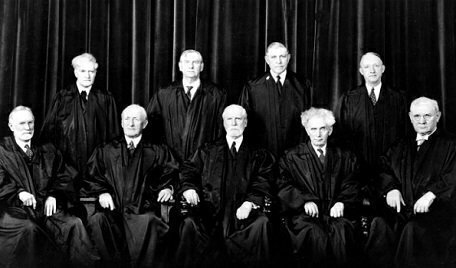Today, the Supreme Court starts its new term on the first Monday of the month of October, an annual event that goes back to 1917. Why is that day so special, and what happens on the first day back for the Justices?
 The Court’s start date is mandated by a law passed by Congress. Originally, the Judiciary Act of 1789 set two annual sessions for the Court. Starting in 1791, the Court met on the first Monday of February, with the second session in August. At the time, the Justices also had to travel regionally to hear court cases.
The Court’s start date is mandated by a law passed by Congress. Originally, the Judiciary Act of 1789 set two annual sessions for the Court. Starting in 1791, the Court met on the first Monday of February, with the second session in August. At the time, the Justices also had to travel regionally to hear court cases.
Over the years, the Court consolidated its two sessions into one annual term in 1802, and then started that term on the first Monday in January (1827), first Monday in December (1844) and the second Monday in October (1873).
Then, in 1916, Congress moved the Court term’s start date from the second Monday in October to the current first Monday. The change was approved on September 6, 1916, as part of the act to redefine the Judicial Code and expand the number of appeals petitions considered by the Court. The new start date took effect in 1917.
The Oxford Companion to the Supreme Court points out that the events that happen on the term’s first day have changed over the years. Prior to World War II, the first day at court was mostly ceremonial and included a visit to the White House to see the President. Since 1964, case arguments have been heard on the term’s first day, and they’ve been regularly scheduled on the first Monday of October since 1975, with the exception of religious holidays.
The Supreme Court Historical Society’s website has a detailed list of traditions and facts about the Court. Each Court is known by the name of its Chief Justice. The current Roberts Court is the 17th version of the Court. John Roberts took the oath as Chief Justice in September 2005, so the Roberts Court is entering its 15th year.
On Monday, the Roberts Court will continue with the institution’s traditions. Of course, no cameras or recording devices, or even mobile phones, are allowed in the courtroom during arguments. All of the Justices shake hands before appearing on the bench – a tradition started by Chief Justice Melville Fuller.
Since 1800, the Justices have worn black robes on the courtroom, and quill pens are still placed in the room as a reminder of the court’s heritage.







